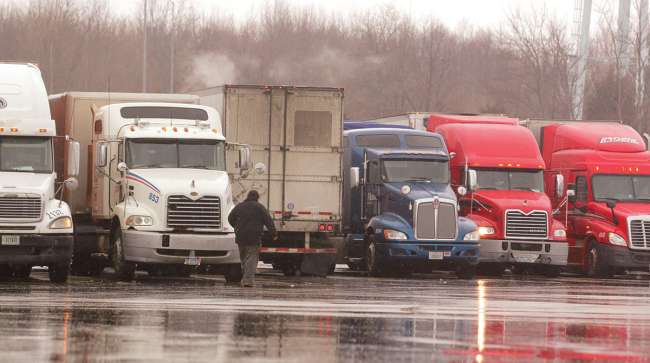Staff Reporter
States Await Details on Seven Elements Added to Freight Plans

[Stay on top of transportation news: Get TTNews in your inbox.]
Details are emerging about seven new elements mandated under the White House’s infrastructure act that states must include in their comprehensive freight plans.
Under federal law, each state that receives funds through the National Highway Freight Program (NHFP) must develop a comprehensive multiyear freight plan with immediate and long-range activities that establishes priorities for federal highway fund investments. Federal funds can be used for preliminary engineering, repairs, right-of-way acquisition, construction, operational improvements and intermodal projects.
With a $1.43 billion average annual apportionment through fiscal year 2026, NHFP funds are meant to provide states and municipalities with money to improve freight shipments. Most federal highway funds flow to state departments of transportation, but some metropolitan planning organizations are involved in planning local projects.
AASHTO Comments to USDOT on... by Transport Topics
State Freight Plans — administered by the Federal Highway Administration — have content requirements, including seven new items mandated by President Joe Biden’s Infrastructure Investment and Jobs Act, signed last November.
Uncertainties exist over how states are going to meet new requirements, since details are not yet complete.
When asked about the new requirements by Transport Topics, an FHWA spokesperson noted that the agency is currently working to update existing State Freight Plan guidance to incorporate the new mandates.
In the meantime, states should reach out to their FHWA division offices for assistance with questions, the spokesperson advised.
According to FHWA, IIJA specifies that the plans now must be updated every four years instead of five. In addition, any state revising its freight plan after Nov. 15, 2021, must also include the following new required elements:
- E-commerce impacts on its freight infrastructure
- Its commercial ports’ inventory
- Military freight considerations
- Most recent assessment of commercial motor vehicle parking and rest facilities
- The latest supply chain cargo flows listed by transportation mode
- Findings and recommendations from any multistate freight compacts if involved in freight corridor plans with other states.
Another new climate change and resilience category involves finding ways to decrease how freight is impacted by natural disasters and weather while also minimizing adverse effects of freight transportation on local air pollution, flooding, stormwater runoff and the loss of wildlife habitat.

Host Michael Freeze discusses insurance coverage and costs with Jane Jazrawy of Carriers Edge and David Berno of Hub International. Tune in above or by going to RoadSigns.TTNews.com.
New requirements in the State Freight Plans were addressed April 1 in a 30-page document the American Association of State Highway and Transportation Officials sent Transportation Secretary Pete Buttigieg seeking clarification and recommending actions to help implement IIJA, also known as the bipartisan infrastructure law. The association, representing highway and transportation departments in the 50 states and the District of Columbia, focuses on all transportation modes including highways, rail and water.
AASHTO urged the U.S. Department of Transportation to outline guidance about what specific data that states must include to demonstrate compliance.
“Several of these requirements will necessitate states to develop or procure additional datasets to meet the new guidelines,” an AASHTO spokesperson told Transport Topics, adding that AASHTO is awaiting additional guidance to be released by FHWA sometime over the next several months.
State Freight Plans date to 2015 when President Barack Obama signed the Fixing America’s Surface Transportation Act (FAST Act) to fund critical transportation projects to ease congestion and facilitate freight movements on interstates and other major roads. The act included a provision requiring states that receive funding under NHFP to develop comprehensive, immediate and long-range plans for freight investments and activities.
Want more news? Listen to today's daily briefing above or go here for more info
Although IIJA continued FAST Act, it restructured highway programs to create four additional formula fund programs and authorized 18 new discretionary programs, according to a February report on federal highway programs by the Congressional Research Service.
“The modified grant structure reflects an increased emphasis on bridge improvement and climate change mitigation and resilience,” the report noted.
The IIJA also added new elements to the National Freight Strategic Plan regarding impacts of the freight system on the environment, resilience, decarbonization, economic growth and rural, underserved and historically disadvantaged communities.

